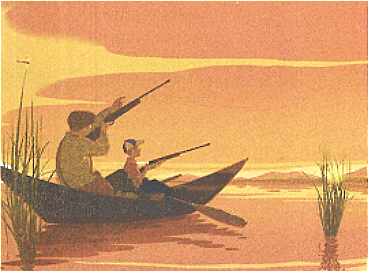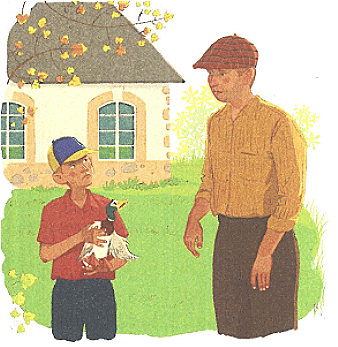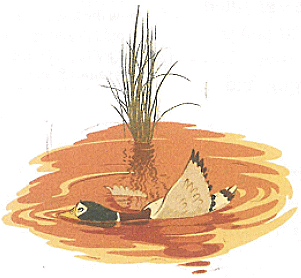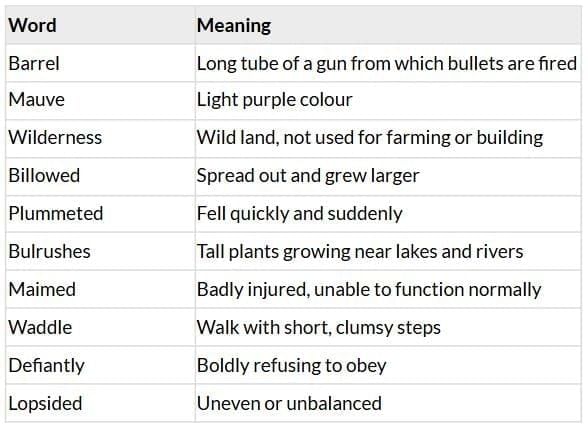Wild Duck Chapter Notes | Gul Mohar Class 6: Book Solutions, Summaries & Worksheets PDF Download
| Table of contents |

|
| About the Author |

|
| Detailed Summary |

|
| Moral / Message |

|
| Character Sketches |

|
| Vocabulary Table |

|
About the Author
Romesh Gunesekera was born in Sri Lanka and later moved to Britain. His writings often explore Sri Lankan life, nature, and human relationships. His works have been translated into many languages. He is best known for novels such as Reef and The Sandglass.
Detailed Summary
The story begins with a man and his young son waiting in a boat to hunt wild ducks. The father teaches the boy how to aim and shoot. Soon, huge flocks of teal appear in the sky, filling it with movement and sound. The father shoots but misses; the boy, more patient, carefully aims and brings down a single duck.
Excited, the boy quickly rows to find the fallen bird. When he picks it up, he is struck by its helplessness and soft feathers. At first, he fears he has killed it, but the bird is still alive, though its wing is broken. The boy feels both guilty and relieved. He decides to take the duck home, bandages its wing, and looks after it lovingly, even though it can never fly again.
One day, when asked about his gun, the boy tells his father he has thrown it away because hunting made him feel sick. The father, though surprised, feels relieved at his son’s decision. The story ends with both realizing that compassion is more valuable than killing.
Moral / Message
The story shows that kindness and empathy are stronger than the desire to harm. True courage is not in shooting an innocent bird but in protecting life. It also teaches us that learning from experience can change our views, and that compassion can guide us toward peace and harmony.
Character Sketches
The Boy
The boy is sensitive, thoughtful, and loves watching birds. Though he learns to shoot, he feels guilty after injuring the duck. His compassion leads him to care for the bird, and his decision to throw away the gun shows his maturity and kindness.
The Man (Father)
The man is an experienced hunter who tries to teach his son the art of shooting. At first, he encourages the hunt, but later he respects his son’s choice to give up the gun. His final sense of peace shows his acceptance of compassion over violence.
The Wild Duck
The wild duck represents innocence and the beauty of nature. Injured by the boy’s shot, it becomes a symbol of compassion and responsibility. Though it never flies again, it teaches the boy the value of life and care.
Vocabulary Table

|
30 videos|61 docs|17 tests
|
FAQs on Wild Duck Chapter Notes - Gul Mohar Class 6: Book Solutions, Summaries & Worksheets
| 1. What is the main theme of "Wild Duck"? |  |
| 2. Who are the key characters in "Wild Duck" and what roles do they play? |  |
| 3. What moral lesson can be derived from "Wild Duck"? |  |
| 4. How does the setting influence the events in "Wild Duck"? |  |
| 5. What is the significance of the wild duck in the play? |  |




















